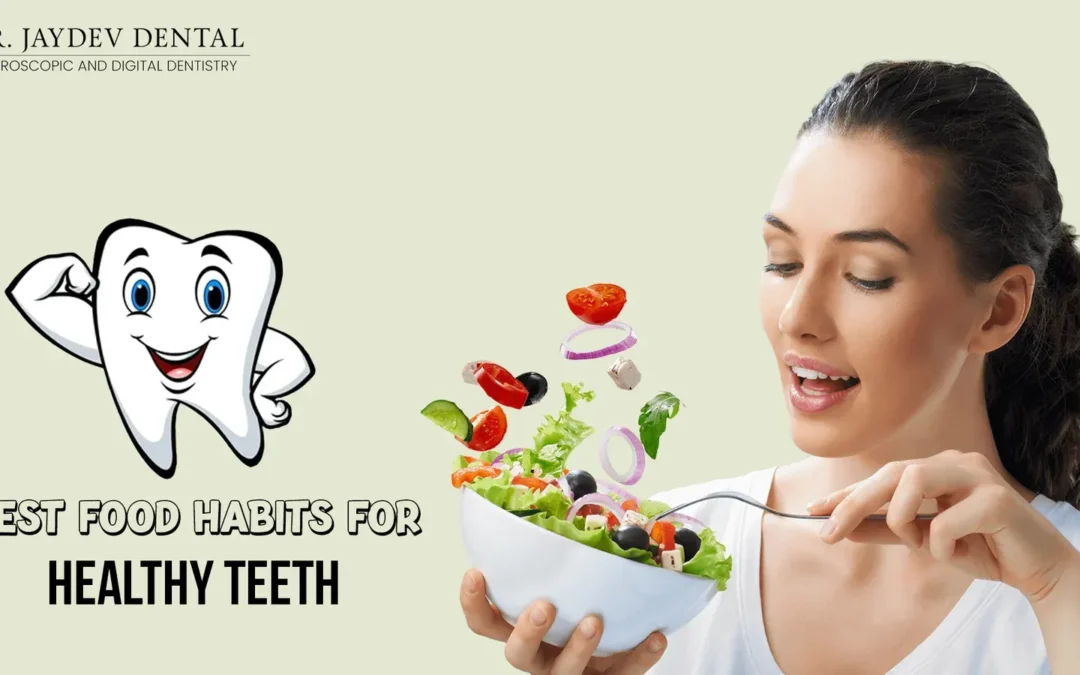Our childhood is a nightmare sometimes. Often we got stopped from eating our favorite Ice creams or chocolates or cool drinks. We have kept on saying, those are not the best food habits for healthy teeth.
We have said that good oral hygiene is necessary to keep teeth and gums healthy. And hence, we habituated to brushing our teeth every day. Along with this, good nutrition and healthy teeth go hand in hand.
“Let food be thy medicine and medicine be thy food” – a famous quote by Hippocrates, the father of modern medicine, couldn’t be more fitting when it comes to maintaining healthy teeth. Just as a healthy diet is important for maintaining overall health, it’s also crucial for keeping your teeth and gums strong and disease-free. So, let’s dive in and discover some of the best food habits for maintaining a sparkling smile!
Your oral health is equal to what you eat
Oral health is often taken for granted. I know you are also on my team in this context. We think that brushing every day is enough to have healthy teeth. But, the practice of keeping our mouth, teeth, and gums clean prevents diseases and keeps us safe from oral or dental infections if any.
What we eat will have an impact on our dental and oral health. Right foods contribute to overall health as well. Since dental hygiene and health are matters of concern, we have spilled the beans on certain foods that you can incorporate into your everyday diet.
The first thing to look up in any food is its sugar quantity. Foods with high amounts of sugar will have adverse effects on teeth. This is the reason our parents restricted us from eating chocolates or Ice cream.
But what are the best foods? The answer is foods that are rich in fiber, especially fruits and vegetables, dairy products, and nuts. We are listing these because they encourage saliva production which cleans the mouth. Also, on top of it, high-fiber foods prevent sugar cravings. What else do you need than controlling some unhealthy cravings?
Along with this, follow a proper dental hygiene routine like brushing twice a day, flossing between meals, and using mouthwash before bed. Along with these, schedule regular dental checkups at least twice a year. This helps to know your oral and teeth better so you can care for them the best.
How does food have an Impact?
The foods or beverages you take to influence your teeth composition. They evaluate the good nutrition and healthy teeth that come in contact with your teeth’s enamel. Processed foods and cool drinks are highly acidic causing cavities in teeth.
Point to note highnesses. Eating patterns and foods we take are the factors of oral health both in adults and children. So, please do not restrict your children from eating their favorite flavors, make sure you also restrict yourself. Have fun with the lovely food but all you need to do is to limit it.
Coming back to our topic, acidic foods when coming in contact with bacteria present in the mouth, attacks the teeth. This eventually leads to tooth decays or if left unnoticed or untreated may lead to severities like a root canal. Again some foods can harm your teeth, while others make them stronger. So, when looking to follow a healthy oral routine, choose your plate in a way that sticks to the food pyramid which gives you a healthy serving. It’s okay my people, do not curb your cravings, eat whatever you want to eat, but look at the portion and frequency.
What do I mean by a Healthy Plate?
According to the USDA Center for Nutrition Policy and Promotion, a balanced and healthy daily diet should include:
We know how you carried back your snack box full of fruits and healthy veggies. But they are the sources. Maybe now, you are snacking your kid on cupcakes, pancakes, chocolates, etc, but focus on whole fruits and a variety of veggies a day. Include dark green, red and orange vegetables, legumes, and starchy vegetables.
Grains we mean not raw or dried. Add whole wheat grains half a time. These may be oatmeal, whole wheat bread, and brown rice. I agree they are not tastier than your chips, biryani, or fast food. But grains make up most of the nutrients.
Dairy may contain fat but there are low-fat or fat-free dairy products you can happily rely on. These bring you enough proteins and vitamins that make the muscles stronger and healthier.
This has become a staple for many. Protein is essential for the body. Choose lean protein such as lean beef, skinless poultry, and fish. Also, you can add a variety of proteins that you love the most such as eggs, beans, peas, or legumes.
Best Foods for Healthy Teeth
Yogurt:
Yogurt is a calcium and protein-rich source. This makes it a highly suitable pick for the strength and health of your teeth and gums. Yogurt is also rich in probiotics which benefits the gums causing the good bacteria to cross out the bad bacteria that cause cavities. If you want to add yogurt to your everyday meals, prefer to add a plain and sugar-less variety.
Leafy Green Vegetables:
Green vegetables and Leafy vegetables are the most common household foods available. We have a variety of vegetables with different recipes to experiment with. These are healthy food items with rich sources of vitamins and minerals and lower calorific levels.
If we take leafy vegetables, kale and spinach boost oral health. Both these are wonder leaves rich in calcium which promotes building the enamel on teeth. They also contain folic acid which is a form of vitamin B that carries many health benefits. If you don’t find a tasty recipe with these, you can simply add them to your salad.
Fruits:
‘An Apple a day keeps the doctor away.’
We have been listening to it all the time when we say No to fruits. Fruits are hard, to begin with. Right from peeling them, chopping or slicing, and Juicing. But once we do these, they are yummy and easy to eat right?
Fruits like apples are rich in fiber and water content. Eating an apple produces saliva which rinses away the harmful bacteria accumulated in and around your teeth or gums. As apples are fibrous, they stimulate the gums.
Not only apples, but every fruit is also a source of healthy and natural vitamins and minerals. You can add Vitamin C-rich fruits like Orange, Lemon, Tomatoes, Strawberries, and Bell peppers to our meal time or snack time.
Most Meats:
Who doesn’t love non-vegetarian food? Meats offer some of the most crucial nutrients.
Do you know? Chewing meat produces saliva which reduces oral acidity washing away the leftover food particles. Red meat and organic meat are especially helpful for this purpose. Fatty fish and tofu are rich in phosphorous which is also an important mineral to protect tooth enamel.
Dark Chocolate:
Yes, you read it right.
Chocolate! Of certainly, as long as it contains at least 70% cacao. Remember we recommend moderate consumption. Due to a substance called CBH, which helps harden tooth enamel and reduce the risk of tooth decay, dark chocolate is a superfood for the teeth. However, not all chocolate is healthy for you.
Green and Black Tea:
Green and Black tea both contain compounds called catechins and polyphenols. These have antimicrobial and antioxidant properties. Hence, they can help to prevent dental issues such as cavities, plaque buildup, and gum disease.
Green tea contains Catechins, specifically EGCG (epigallocatechin gallate). This helps to inhibit the growth of bacteria that can cause tooth decay. This can help to reduce the risk of cavities and other dental issues.
Polyphenols, found in both green and black tea have antioxidant properties. Antioxidants can help to protect teeth and gums from damage caused by free radicals. This can help to reduce the risk of gum disease and other dental issues.
Sugarless Chewing Gums:
We love chewing gums and they are the best exercise for teeth, gums, and jaws. Chewing gums help in producing more saliva that removes the debris from your mouth. There are a variety of chewing gums with different flavors and additives. Chewing gum also increases the amount of bacteria-fighting substances in saliva, such as enzymes and antibodies, which can help to reduce plaque formation and prevent tooth decay.
But, pick the sugarless gums that help you better. In particular, gum containing xylitol a sugar substitute can help reduce the growth of cavity-causing bacteria, called Streptococcus mutants.
Fluoride-rich Foods:
Fluoride is a mineral that is naturally present in some foods. We can also add to others through fortification. Fluoride is known for its ability to strengthen tooth enamel and prevent tooth decay. When fluoride is present in the diet, it is absorbed into the tooth enamel and helps to rebuild the mineral structure of the tooth, making it more resistant to acid attacks from bacteria and sugar.
Fluoride also helps to reduce the number of bacteria in the mouth, which can lead to less plaque buildup and fewer cavities. Foods that are rich in fluoride include seafood, such as fish and shellfish, as well as tea and some fruits and vegetables. Drinking water that has been fluoridated is also a good way to get fluoride into the diet.
In addition to consuming fluoride-rich foods, it’s also important to practice good oral hygiene and to see a dentist regularly for checkups and cleanings. This will help to keep teeth healthy and prevent dental issues from arising.

